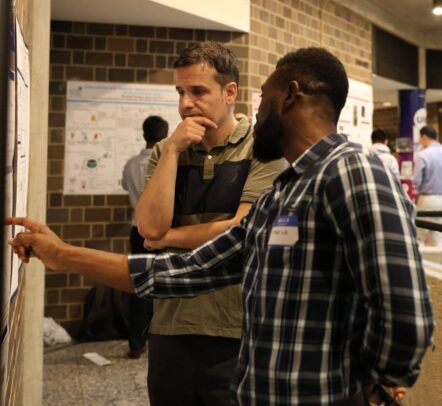Inventing the next generation of batteries
The University of Illinois Chicago will join a new Department of Energy initiative uniting researchers from three national laboratories and 12 universities to pursue cleaner, safer and longer-lasting battery technologies.
UIC is one of only three Minority-Serving Institutions in the Energy Storage Research Alliance, funded by a five-year, $62.5 million grant from the Department of Energy and led by Argonne National Laboratory. The collaboration will explore the scientific foundations in electrochemistry and materials science that enable breakthroughs in energy storage.
The innovation hub will also create training programs and pipelines that produce a diverse workforce of next-generation battery researchers and support U.S. competitiveness in the booming battery industry.

The UIC partnership in the hub will be led by Jordi Cabana, who has a joint appointment at UIC and Argonne and co-directs the George Crabtree Institute for Discovery and Sustainability. Cabana’s research group will study new electrolytes and more sustainable alternatives to lithium — the most common substance used in today’s batteries — for future batteries that promise improvements in capacity and safety.
“Lithium is very localized, and it’s not easy to extract,” said Cabana, professor of chemistry at UIC and scientist and group leader at Argonne. “There’s a growing interest in sodium, which is much more abundant, for the next generation in both liquid and solid-state batteries. If we need to overcome fundamental barriers to the development of a new class of devices, as is the case with solid-state batteries today, we might as well do it with sodium upfront to simultaneously solve scientific and sustainability challenges.”
UIC will also be at the center of the innovation hub’s efforts to build new training programs for students and early-career researchers with industry, academia and government. The collaboration will create new pathways for students from underrepresented populations in STEM to gain research experience and spark scientific careers by participating in a national initiative, Cabana said.
“It’s more than just conventional workforce development,” Cabana said. “The idea is to not only promote students to be exposed to research, but to expose them to the mechanics of a large program. We’re particularly interested in creating a cohort where we have students travel, exchange ideas and build their networks.”
The role of UIC in the new Energy Storage Research Alliance reflects the long history of the institution in energy storage science. The university was previously a partner in the Argonne-led Joint Center for Energy Storage Research, which was directed by pioneering UIC scientist George Crabtree, and participated in DOE Energy Frontier Research Centers studying the mechanisms for new batteries.
UIC scientists have made advances toward new energy storage technologies, such as lithium-carbon dioxide batteries and lithium-air batteries, universal battery superchargers, and novel materials that reduce the risk of fire and enhance storage capacity.
“Our partnership with the Energy Storage Research Alliance is a testament that UIC continues to be a major player when it comes to cutting-edge energy storage research,” Cabana said. “The new partnership between UIC and Argonne through the Crabtree Institute will help provide the mechanisms that this center needs to succeed at all levels.”
